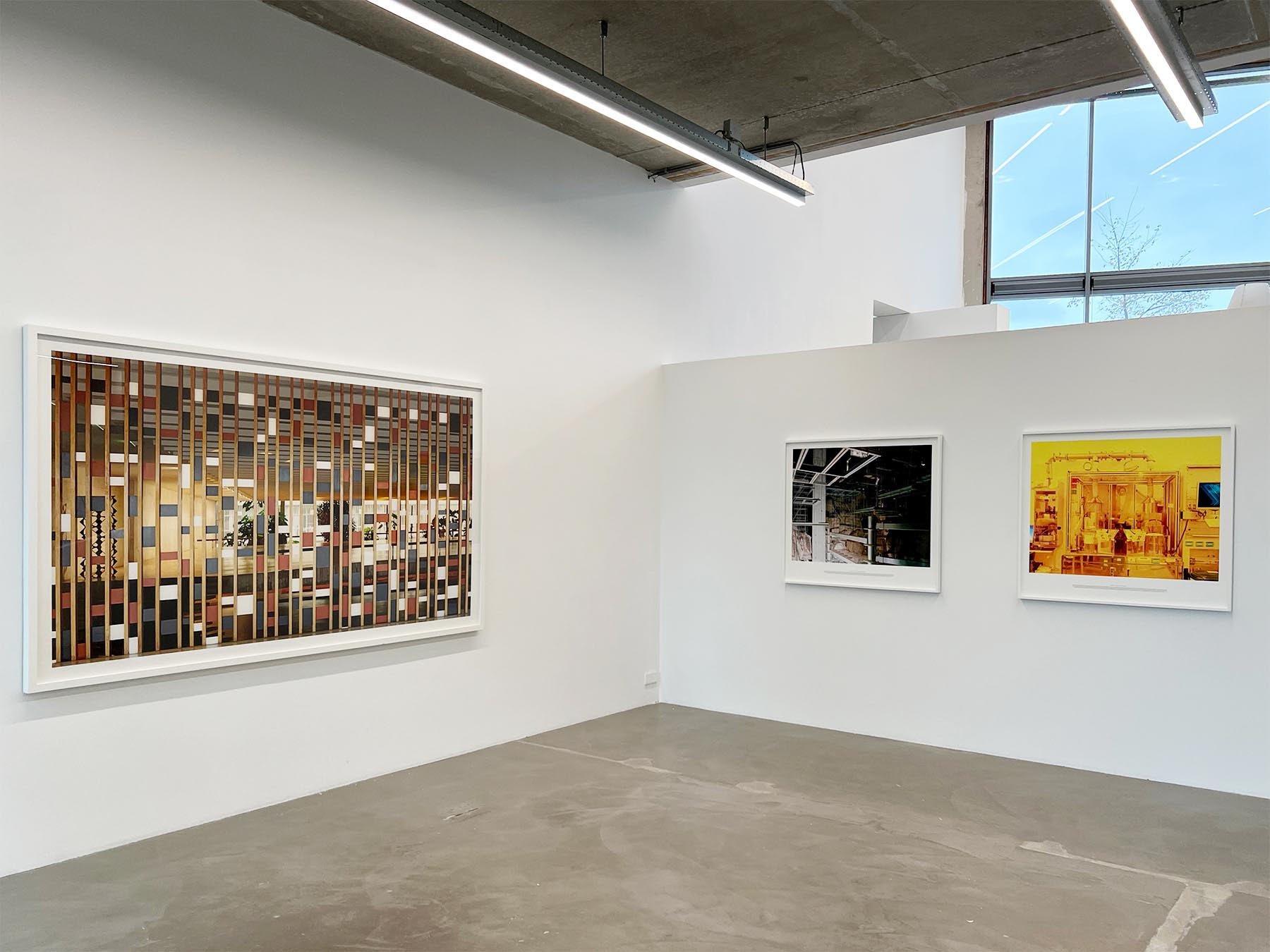Stanley Kubrick’s 2001: A Space Odyssey set a continued standard for the science fiction story. The film, an adaptation of a novel, was originally released in 1968. It intended to ‘explore the reasons for believing in the existence of intelligent extraterrestrial life’ and humanity's response to that kind of discovery.
This film, quickly becoming a paradigm of sorts, continues to have great influence in society, an example being the exhibition currently on display at the Ravestijn Gallery in Amsterdam entitled ‘I’m Sorry Dave’. The title, coming from the artificial intelligence from Kubrick’s film, is said moments after HAL 9000 becomes sentient, highlighting the fear and possible consequences that come as a result of technological advancements.

Installation view of 'I'M SORRY DAVE' / courtesy of The Ravestijn Gallery
The exhibition explores questions and themes posed in the film that continue to remain relevant to today’s society. Through direct and indirect references to the film, the work of six participating artists explores the ideas and aesthetics introduced by Kubrick over fifty years ago. Vincent Fournier’s 2019 photograph Space Odyssey Spacesuit #1 is an image of the costume worn in the film. The spacesuit, which appears to be far from outdated, shows not only how far ahead of its time 2001: A Space Odyssey truly was, but also how fitting it is in the modern day. The photograph emphasizes the color and curve of the space suit, altering the perspective to present it as something that’s less recognizable. The skewed point of view presents this suit not as a movie costume, but as an altered glimpse into the future that Kubrick conjured up through the film.

The Dance of Venus, 2019 © Koen Hauser / courtesy of The Ravestijn Gallery
These same fluid lines and curves are seen in Koen Hauser’s 2019 photograph The Dance of Venus. The title of the image references the unexplored planet, named after the Roman Goddess of love. Though covered in dense clouds, the planet is one of the brightest in the solar system. This combination of mystery and beauty is seen in the faceless, graceful figures in this image. The movement and curvature mimic the clouds of sulfuric acid present on the planet through the abstract interpretation of female form, echoing the female forms of antiquity. This speaks to the knowledge and advancements we’ve made concerning space travel, yet doesn’t shy away from the incredible amount of unknown.
Philippe Braquenier’s 2014 photograph Wikileaks, Pionen Data Centre- Stockholm, Sweden, 04/11/02014 shows an actualized version of hypothesized future technological advancements. Braquenier’s approach results in the data center looking more like a scene out of a movie than what someone would guess a modern-day data center would look like. In conjunction with the other imagery in the exhibition, Kubrick’s presumed future is manifested. The image looks harsh and cold, with nearly no recognizable touch of a living human. This example proves that this nearly apocalyptic future created in 2001: A Space Odyssey, once watched purely for entertainment, is slowly becoming reality.

Wikileaks, Pionen Data Centre – Stockholm, Sweden – 041102014 © Philippe Braquenier / courtesy of The Ravestijn Gallery

Space Shuttle Discovery Nose Landing Gear, J.F.K. Space Center [NASA], Florida, U.S.A., 2011 © Vincent Fournier / Courtesy of The Ravestijn Gallery
This same present day manifestation of Kubrick's hypothesized world is seen in Braquenier’s 2016 image Pont D’Arc Cavern- Vallon-Pont-D’Arc, France, 06/07/0216. The technology that is understood by so few, yet trusted by nearly everyone, appears to look older than some technology displayed in the film. The idea of technology being stored and protected underground feels almost primitive in context. This image embodies the notion that as far as technology has gone, it will, and can, go farther still.

Installation view of 'I'M SORRY DAVE' / courtesy of The Ravestijn Gallery
The direct recreations of Kubrick’s future against the images of our existence illustrate the feats and the fear that we’ve created with technology. With each new advancement comes perturbation, making us question when enough is enough. Through these images and a film created over fifty years ago, viewers are left to answer the questions: how much have we changed, and are we ready for the future those changes bring?






